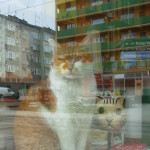Perception in Motion: A Stroll through Paris in the Spirit of Lucius Burckhardt
Rethinking Space through Perception
Lucius Burckhardt, sociologist and economist, introduced strollology as a means to critically explore how landscapes and urban spaces are perceived1. For Burckhardt, perceiving is not merely seeing—it is discovering new perspectives, noticing the unfamiliar, and reflecting on one’s own cognitive filters.
In this view, space is not objective; it is a construct of perception, inherently ambiguous and shaped by individual experience.










